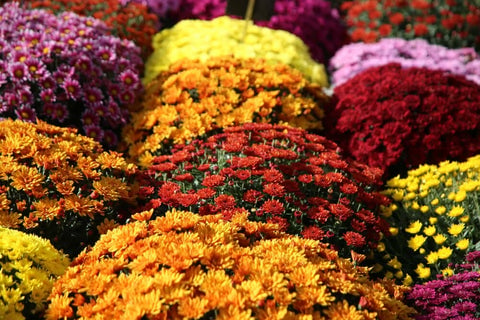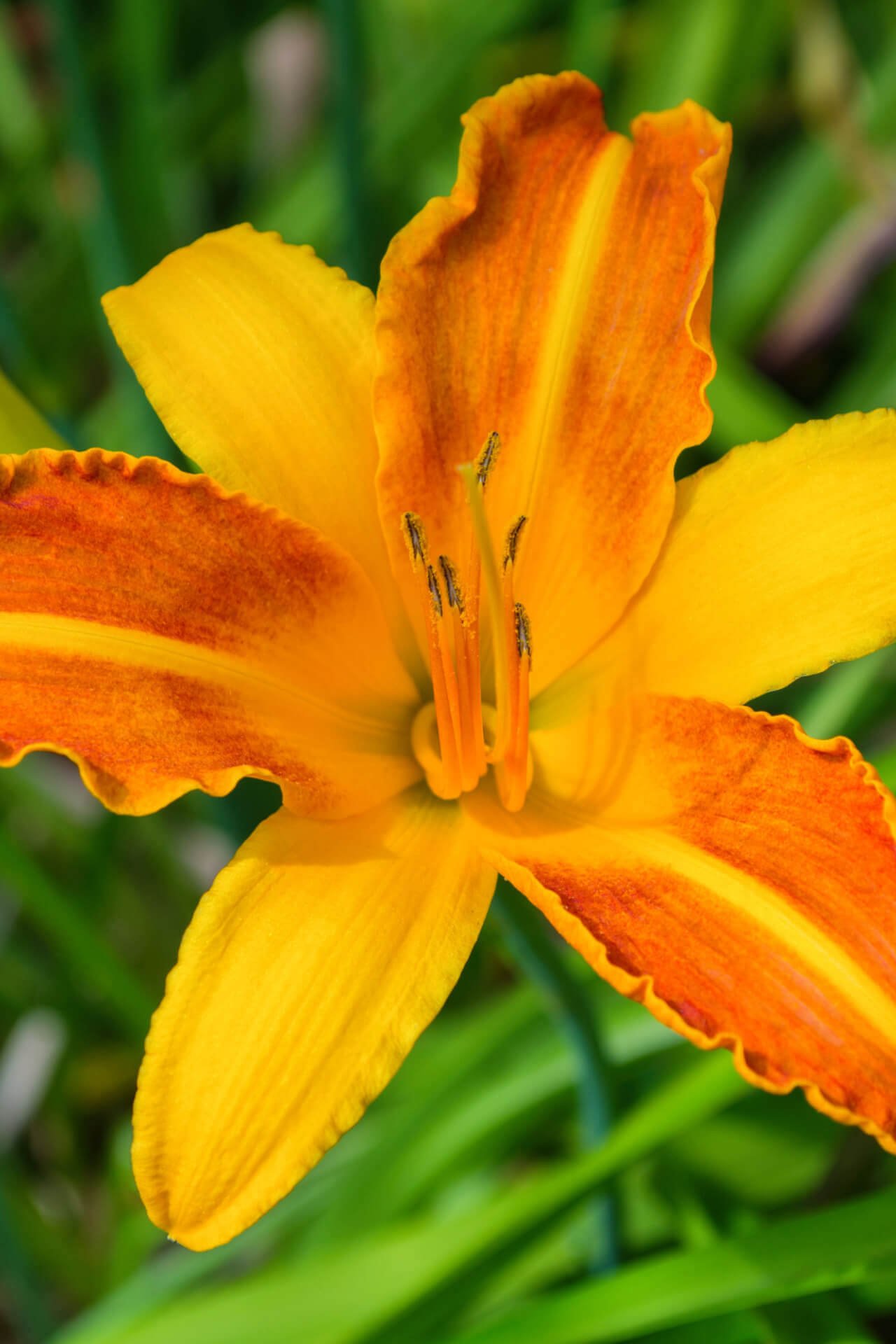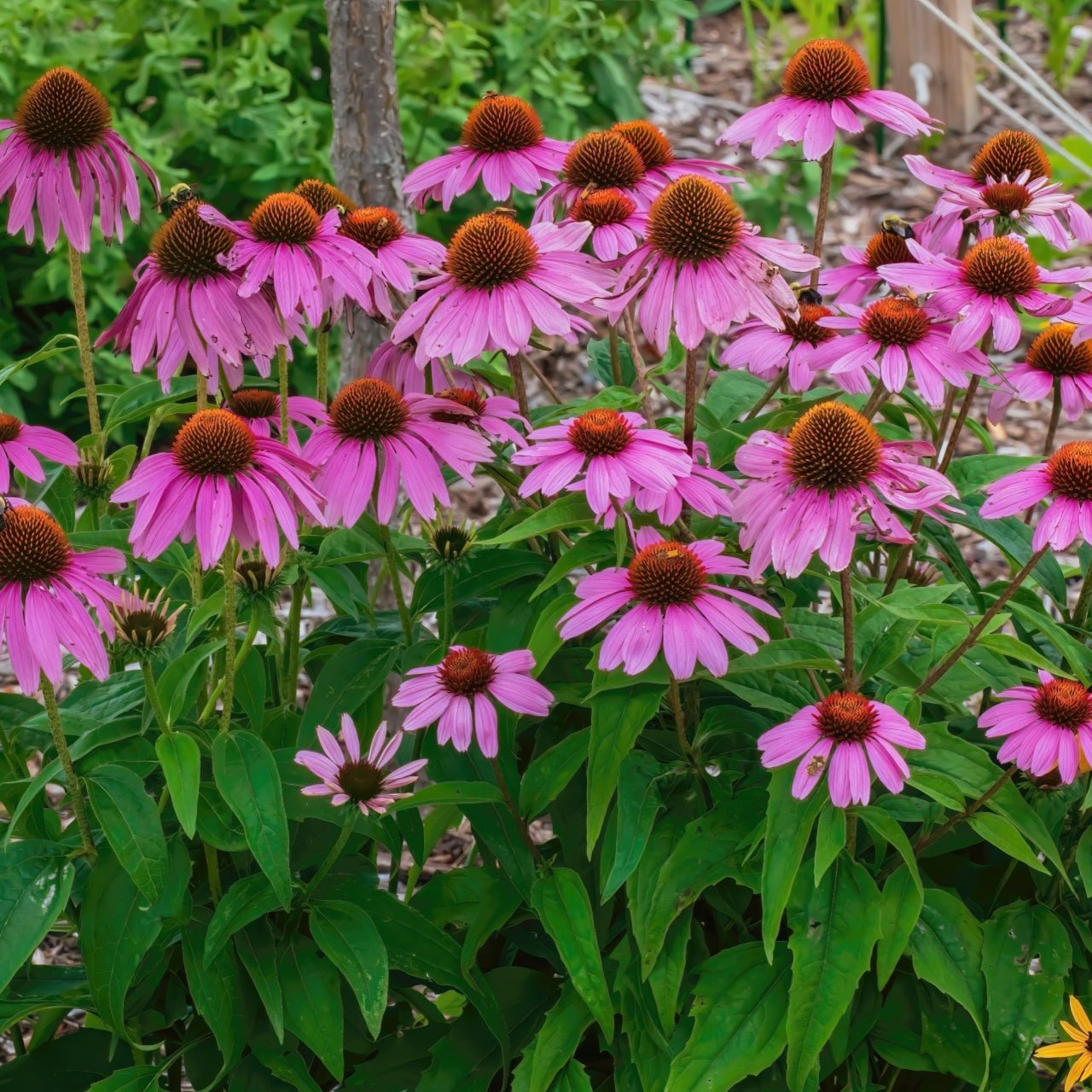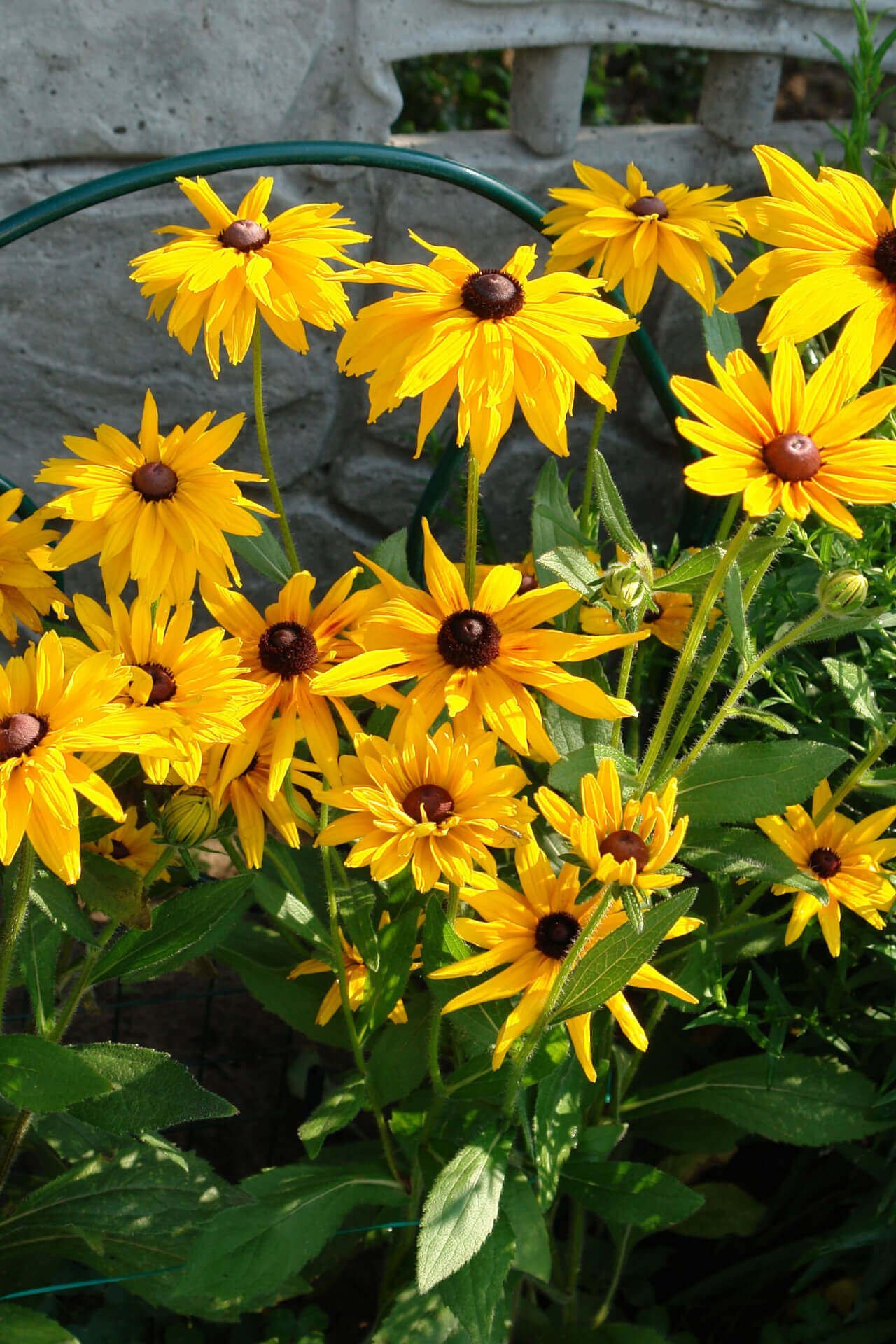Fall is a time of transformation in the garden, and certain perennials shine brightest during this season. These fall-blooming perennials bring vivid colors and resilience, adding an extra layer of beauty just as summer plants begin to fade. Whether you're seeking bold hues or more delicate touches, fall perennials offer a stunning display that lasts well into the cooler months.
One of the best fall-blooming perennials is the chrysanthemum.

Chrysanthemum are often called "mums." Known for their wide array of colors, mums are a classic fall flower, bringing warmth and vibrancy to garden beds, containers, and borders. From rich reds and bright yellows to soft purples and whites, chrysanthemums enhance the autumn landscape with a dynamic palette. Their blooms typically last from late summer into early winter, surviving even after the first frost. Mums are also hardy and low-maintenance, popular with gardeners who want color without constant care.
Asters are another standout among fall-blooming perennials. With these daisy-like flowers in shades of purple, blue, pink, and white, asters create a striking contrast against the changing outdoors for the season. These perennials bloom from late summer into fall, and their vibrant flowers attract pollinators such as bees and butterflies. Asters are resilient, withstand cooler temperatures, and thrive in sunny spots with well-drained soil. Their long blooming period ensures color throughout the fall.
Sedum is among the most reliable fall bloomers, particularly the 'Autumn Joy' variety. This succulent-like plant thrives in poor soil and dry conditions, making it a rugged, low-maintenance option for fall gardens. 'Autumn Joy' sedum starts with pink flowers that slowly deepen into a rich red or bronze hue as the season progresses. The diverse colors add visual interest to the garden, providing a warm, earthy tone that complements other fall flowers. Sedum's ability to thrive in drought-like conditions makes it perfect for gardens that receive less rainfall during the fall season.
Goldenrod is another standout fall perennial that brings brightness to the garden with its tall, yellow flower spikes. Often mistaken for ragweed (which causes allergies), goldenrod is a deer-resistant, drought-tolerant perennial that thrives in full sun and poor soil. Its bold yellow blooms brighten any autumn garden and provide a valuable nectar source for late-season pollinators like butterflies and bees. Goldenrod's upright growth habit also makes it an excellent backdrop for shorter perennials, adding height and structure to the fall garden.
Japanese Anemones add an elegant touch to the fall garden with their delicate, poppy-like flowers in shades of pink or white. These perennials bloom from late summer into fall, offering a soft, graceful presence as other plants begin to fade. Their tall, wiry stems allow the blooms to sway in the breeze, creating movement and visual interest in the autumn landscape. The long-lasting blooms of Japanese Anemones can continue well into October, adding a light and airy feel to the fall garden.
Incorporating these fall-blooming perennials into your garden ensures that your landscape stays vibrant and full of life well into the cooler months. Whether it's the bold hues of chrysanthemums, the delicate beauty of Japanese Anemones, or the structural elegance of sedums, these plants bring long-lasting color and interest to any fall garden. Their ability to attract pollinators, resist deer, and tolerate various soil and weather conditions makes them beautiful and practical for gardeners looking to extend the season's beauty.
What fall flowers come back every year?
Fall flowers returning each year are typically perennials, meaning they regrow from the same root system each season. These plants are hardy enough to survive winter dormancy and reemerge the following year, bringing consistent beauty to your garden every autumn. Many of these fall-blooming perennials offer vibrant colors and long-lasting blooms, ensuring your garden remains lively even as summer fades. Here are some of the top fall flowers that reliably return year after year.
Chrysanthemums, often known simply as "mums," are among the most iconic fall-blooming perennials. Mums thrive in cooler weather and are available in warm autumn colors like red, yellow, orange, and purple. These flowers are hardy in most climates and return each year when planted in well-drained soil. With proper care and some added mulch in the winter, chrysanthemums become more vital and vibrant with each passing season, providing a reliable burst of fall color year after year.
Asters are another popular perennial for fall gardens. With their daisy-like flowers in purple, pink, and white shades, asters bloom from late summer into the fall, adding a splash of color just as other plants begin to fade. Asters are especially beneficial because they attract pollinators like bees and butterflies, making them a favorite in wildlife-friendly gardens. Asters are easy to grow, and will reliably return yearly with minimal maintenance, making them a long-term investment in your garden's fall display.
Sedum, especially the 'Autumn Joy' variety, is a tough, low-maintenance perennial that thrives in poor soil and drought conditions. Sedum's flowers start as pale pink and gradually darken to deep red or bronze as the season progresses, providing rich fall tones that change over time. Sedum is particularly appreciated for its ability to withstand harsh conditions, making it a durable option for gardeners who want reliable fall blooms without much fuss. The succulent-like leaves also add texture to the garden, making it a versatile addition that offers beauty and resilience.
Japanese Anemonesare another perennial that blooms in late summer and continues through the fall. These plants feature delicate pink or white flowers on tall stems, creating an elegant and graceful look in the garden. Japanese Anemones are shade-tolerant and thrive in moist, well-drained soils, making them versatile for gardens with varying light conditions. Their ability to bloom consistently year after year makes them a favorite for gardeners wanting sophistication in their fall landscape.
Goldenrod is another excellent fall-blooming perennial that reliably returns every year. Its tall, bright yellow flower clusters contrast the deeper tones of fall foliage and other autumnal plants. Goldenrod is a native plant often misunderstood as a cause of allergies (the real culprit is ragweed). In reality, goldenrod benefits pollinators and requires very little maintenance once established. It's also deer-resistant and thrives in poor soil, making it a robust and practical choice for fall gardens.
Helenium, commonly known as sneezeweed, is a vibrant fall bloomer with red, orange, and yellow daisy-like flowers. Despite its name, helenium does not cause sneezing; instead, it was historically used in snuff, hence the name. This plant is known for its long-lasting blooms that persist into fall. Helenium is another perennial that returns each year with little care, adding bold color to your garden late into the growing season.
These fall-blooming perennials not only come back year after year but often improve with age, providing increasingly robust and reliable blooms. Their hardiness and ability to thrive through cooler temperatures make them excellent choices for gardeners looking to extend the season's beauty without replanting each year. By incorporating these resilient plants into your garden, you can ensure that your fall landscape remains colorful, vibrant, and full of life every season.
When to plant fall-blooming perennials?
The ideal time to plant fall-blooming perennials is spring or early summer. This timing allows the plants to establish root systems before the arrival of their flowering period in the fall. By planting in the spring or early summer, you give the perennials ample time to acclimate to their environment, develop strong roots, and adjust to the garden's soil and growing conditions. This ensures they will be healthy and vigorous when they bloom later in the year.
When planted in late summer, perennials can use the warmer months to grow a sturdy underground root system, essential for long-term survival. The best way of planting is to ensure that the soil is workable, which means it should not be too wet or too dry and temperatures should not be scorching. Well-draining soil is also essential for preventing root rot, as many fall-blooming perennials prefer not to sit in soggy conditions.
While spring is the optimal planting window, you can still plant fall-blooming perennials in late summer or early fall if needed. However, if you grow in late summer, it's essential to do so at least six to eight weeks before the first frost. This allows the plants to settle into the soil and establish roots before going dormant for the winter.
For gardeners who miss the spring or summer window, container-grown perennials are a good option for planting in the fall. These plants have already developed root systems, which makes them more resilient to late planting. However, it's still crucial to water them well after planting and continue regular care through the fall and winter.
Timing is essential when planting fall-blooming perennials. Whether you choose spring or early summer, the primary goal is to give the plants enough time to grow strong roots before their blooming period. Doing so ensures that your fall-blooming perennials will look their best in the current year and return year after year, adding lasting beauty to your garden.
One of the most hardy perennial flowers is the daylily(Hemerocallis).

Daylily is known to thrive in various climates and conditions and is often considered one of the most resilient and adaptable perennials. It can withstand heat and cold, tolerating drought once established and flourishing in various soil types, from clay to sandy or well-drained soils. This versatility makes daylilies a popular choice for gardeners looking for low-maintenance, tough plants that can reliably return year after year.
Daylilies are hardy in U.S.D.A. zones 3 to 9, meaning they can survive the cold winters of northern regions and the hot summers of southern climates. Once planted, daylilies form thick clumps of tuberous roots that help them endure drought, making them particularly useful in areas with inconsistent rainfall. Their blooms, which typically last only a day, are produced in abundance, ensuring that the plant remains in flower for weeks, sometimes months, during the growing season.
In addition to their hardiness, daylilies are highly resistant to pests and diseases. Unlike some other perennials, they rarely suffer from issues like powdery mildew or root rot, and deer tend to leave them alone due to their fibrous, somewhat bitter leaves. This makes them an excellent choice for gardens troubled by wildlife.
Daylilies come in various colors, sizes, and bloom types, ranging from traditional orange and yellow hues to more exotic shades of purple, pink, and red. This variety allows gardeners to mix and match different types of daylilies to create visually diverse flower beds that can thrive in even the harshest conditions.
Another feature that adds to the daylily's hardiness is its ability to multiply over time. Once established, daylily clumps will spread, creating dense groupings that should be divided every few years to promote healthier growth and provide free plants for other parts of the garden. This characteristic makes daylilies not only a durable and attractive option but also a cost-effective one, as they naturally increase in number without needing to be repurchased or replanted annually.
The daylily is hard to beat for gardeners seeking a perennial that can withstand harsh conditions while providing a beautiful and long-lasting display. Its ability to thrive in various climates, resist common pests, and multiply over time ensures that it will continue to bring beauty and resilience to the garden year after year.

Black-Eyed Susans and Coneflower
While daylilies are among the hardiest perennials, other strong contenders include sedum, coneflower (Echinacea), and Black-Eyed Susan (Rudbeckia). Each plant shares similar traits, such as cold hardiness and resistance to pests and diseases. However, the daylily's adaptability to various environments low-maintenance characteristics make it one of the most reliable choices for gardens in diverse climates.








